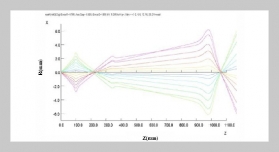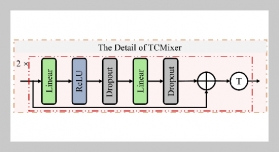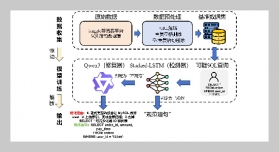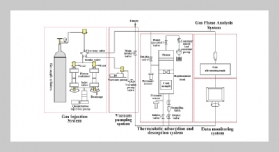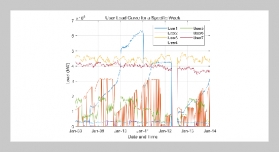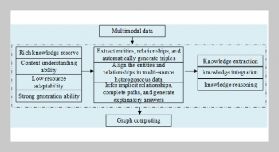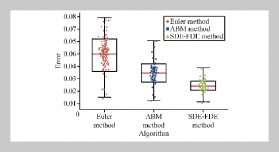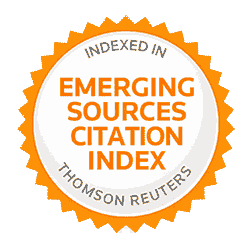REFERENCES
- [1] Moholkar, A. V., Shinde, S. S., Babar, A. R., et al., “Development of CZTS Thin Films Solar Cells by Pulsed Laser Deposition: Influence of Pulse Repetition Rate,” Solar Energy, Vol. 85, No. 7, pp. 1354 1363 (2011). doi: 10.1016/j.solener.2011.03.017
- [2] Moritake, N., Fukui, Y., Oonuki, M., et al., “Preparation of Cu2ZnSnS4 Thin Film Solar Cells under NonVacuum Condition,” Phys. Status Solidi C, Vol. 6, No. 5, pp. 12331236 (2009). doi: 10.1002/pssc.2008 81158
- [3] Katagiri, H., Jimbo, K., Yamada, S., et al., “Enhanced Conversion Efficiencies of Cu2ZnSnS4-Based Thin Film Solar Cells by Using Preferential Etching Technique,” Appl. Phys. Exp, Vol. 1, pp. 041201041202 (2008). doi: 10.1143/APEX.1.041201
- [4] Ennaoui, A., Lux-Steiner, M., Weber, A., et al., “Cu2ZnSnS4 Thin Film Solar Cells from Electroplated Precursors: Novel Low-Cost Perspective,” Thin Solid Films, Vol. 517, No. 7, pp. 25112514 (2009). doi: 10.1016/j.tsf.2008.11.061
- [5] Wang, K., Gunawan, O., Todorov, T., et al., “Thermally Evaporated Cu2ZnSnS4 Solar Cell,” Appl. Phys. Lett., Vol. 97, p. 143508 (2010). doi: 10.1063/1. 3499284
- [6] Katagiri, H., Jimbo, K., Maw, W. S., et al., “Development of CZTS-Based Thin Film Solar Cells,” Thin Solid Films, Vol. 517, No. 7, pp. 24552460 (2009). doi: 10.1016/j.tsf.2008.11.002
- [7] Shin, B., Gunawan, O., Zhu, Y., et al., “Thin Film Solar Cell with 8.4% Power Conversion Efficiency Using an Earth-Abundant Cu2ZnSnS4 Absorber,” Prog. Photovolt: Res. Appl., Vol. 21, No. 1, pp. 7276 (2013). doi: 10.1002/pip.1174
- [8] Seol, J. S., Lee, S. Y., Lee, J. C., et al., “Electrical and Optical Properties of Cu2ZnSnS4 Thin Films Prepared by RF Magnetron Sputtering Process,” Sol. Energy Mater. Sol. Cells, Vol. 75, No. 12, pp. 155162 (2003). doi: 10.1016/S0927-0248(02)00127-7
- [9] Todorov, T. K., Tang, J., Bag, S., et al., “Beyond 11% Efficiency: Characteristics of State-of-the-Art Cu2ZnSn (S,Se)4 Solar Cells,” Adv. Energy Mater, Vol. 3, No. 1, pp. 3438 (2012). doi: 10.1002/aenm.201200348
- [10] Pistor, P., Caballero, R., Hariskos, D., et al., “Quality and Stability of Compound Indium Sulphide as Source Material for Buffer Layers in Cu(In,Ga)Se2 Solar Cells,” Sol. Energy Mater. Sol. Cells, Vol. 93, No. 1, pp. 148152 (2009). doi: 10.1016/j.solmat.2008.09. 015
- [11] Benchouk, K., Ouerfelli, J., Saadoun, M., et al., “Optical and Electrical Characterization of In2S3 Buffer Layer for Photovoltaics Applications,” Physics Procedia, Vol. 2, No. 3, pp. 971974 (2009). doi: 10.1016/ j.phpro.2009.11.051
- [12] Rajeshmon, V. G., Poornima, N., Sudha, K. C., et al., “Modification of the Optoelectronic Properties of Sprayed In2S3 Thin Films by Indium Diffusion for Application as Buffer Layer in CZTS Based Solar Cell,” J. Alloys Comp, Vol. 553, pp. 239244 (2013). doi: 10.1016/j.jallcom.2012.11.106
- [13] Repins, I., Contreras, M. A., Egaas, B., et al. “19.9%- Efficient ZnO/CdS/CulnGaSe2 Solar Cell with 81.2% Fill Factor,” Prog. Photovolt: Res. Appl, Vol. 16, No. 3, pp. 235239 (2008). doi: 10.1002/pip.822
- [14] Burgelman, M., Nollet, P. and Degrave, S., “Modeling Polycrystalline Semiconductor Solar Cells,” Thin Solid Films, Vol. 361362, pp. 527532 (2000). doi: 10. 1016/S0040-6090(99)00825-1
- [15] Marlein, J., Decock, K. and Burgelman, M., “Analysis of Electrical Properities of CIGSSe and Cd-Free CIGSSe Solar Cells,” Thin Solid Films, Vol. 517, No. 7, pp. 23532356 (2009). doi: 10.1016/j.tsf.2008.11. 048
- [16] Nollet, P., Burgelman, M. and Degrave, S., “The Back Contact Influence on Characteristics of CdTe/CdS Solar Cells,” Thin Solid Films, Vol. 361362, pp. 293 297 (2000). doi: 10.1016/S0040-6090(99)00760-9
- [17] Khelia, S., Verschraegen, J., Burgelman, M., et al., “Numerical Simulation of the Impurity Photovoltaic Effect in Silicon Solar Cells,” Renewable Energy, Vol. 33, No. 2, pp. 293298 (2008). doi: 10.1016/j.renene. 2007.05.027
- [18] Hossain, M. I., Vanathan, P. C., Zaman, M., et al., “Prospect of Indium Sulphide as an Alternative to Cadmium Sulphide Buffer Layer in CIS Based Solar Cells from Numerical Analysis,” Chalcogenide Letters, Vol. 8, No. 5, pp. 315324 (2011).



